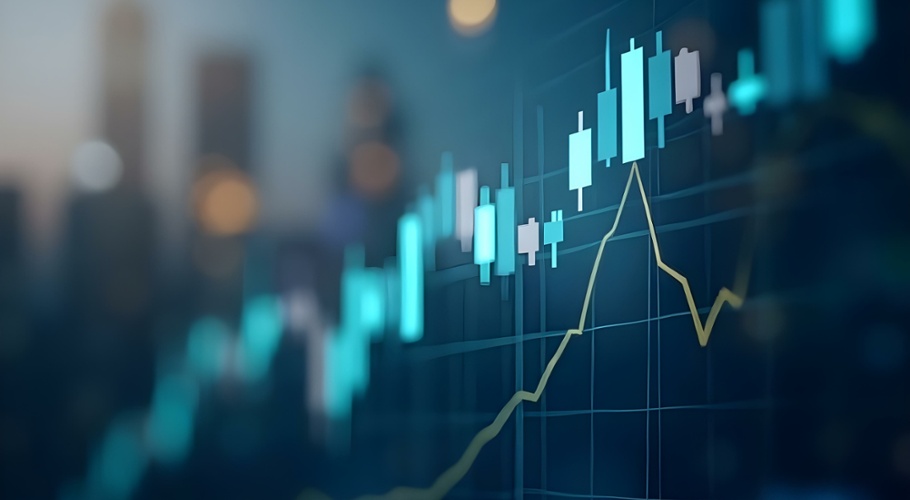Where to next for fixed income ETFs after bumper inflows
Bonds have regained their reputation as a reliable portfolio ballast after a difficult 2022, a fact that is reflected not just in benchmark performance, but also in significant inflows into fixed income Exchange Traded Funds (ETFs) over the past year.
Indeed, inflows have far outstripped those for the global equity products that traditionally capture the most business among locally-listed ETFs. Figures from Betashares show that cash and fixed income ETFs captured 60% of industry flows in the year to 31 May, followed by 34.2% for Australian share ETFs.
“Right now, fixed interest is generally a pretty good asset class to be in. Regardless of your view about how far the Reserve Bank will raise rates relative to market expectations, both floating and fixed rate exposures are offering a decent yield,” says Cameron Gleeson, Senior Investment Strategist at Betashares.
“With fixed rates, you might be at risk of yields creeping higher, but you’re at a much higher starting base. Traditional fixed rate bonds are now a source of income and potential capital gain should the economic environment deteriorate,” he says.
Betashares, iShares and Vanguard command the biggest market share by far in the sector, offering diverse products which give access to the three chief pillars of a defensive portfolio: cash and money markets, credit income, and traditional fixed rate bonds. The range of securities included stretches from cash to government bonds, corporate bonds, floating rate notes and hybrid securities. ETFs which seek to track composite indices made up of investment grade assets are also available.
All the above pillars can have a place in portfolios but there is no one-size-fits-all approach and bespoke solutions are required for individual investors.
Active or passive?
Market pundits continue to argue active management may have a bigger place in equities portfolios in current market conditions, but the same does not necessarily apply to fixed interest. Head of Fixed Income at Betashares, Chamath De Silva, suggests the excess returns of active managers in the asset class are typically the result of a structural overweight position to credit.
He points to research by fund manager AQR Capital Management titled Active Fixed Income Illusions to support his case. The 2019 research argues that “traditional discretionary active fixed income strategies offer little in the way of true alpha and may significantly reduce the strategic diversification benefit of fixed income as an asset class.”
De Silva says: “A lot of advisers have traditionally allocated clients’ capital to active managers, but even though yields have risen, it’s generally a lower returning asset class, so fees do matter and it’s important to make sure you’re not just paying for a structural credit bet that you can easily take yourself.”
.png)
Source: Bloomberg; Betashares Capital, as at 7 June 2023. 3-month rolling (weekly return), US Stock/Bond Correlations: S&P 500 Index vs Bloomberg US Treasury TR Index; Australian Stock/Bond Correlations: S&P/ASX 200 Index vs Bloomberg AusBond Govt 0+ Yr Index.
An obvious question is: where to next for fixed income markets? The answer perhaps partly lies in the shifting narrative as it becomes apparent to market participants that a pause in rate hikes does not necessarily mean the cycle has peaked.
“There is a lot of uncertainty about where central banks will take policy rates. Australia’s Reserve Bank obviously surprised markets in May and June after pausing rate hikes in April, and the Bank of Canada also resumed hikes in June after a several months’ hiatus,” says De Silva.
“The bond market is coming to the realisation that the end of the hiking cycle may be further away than it thought.”
Reserve Bank of Australia Governor, Philip Lowe added impetus to this perception in a June 7 speech in which he said “Some further tightening of monetary policy may be required, but that will depend upon how the economy and inflation evolve. The [RBA] Board will continue to pay close attention to developments in the global economy, trends in household spending, and the outlook for inflation and the labour market. It remains resolute in its determination to return inflation to target and will do what is necessary to achieve that.”
In early June, market expectations reflected the likelihood of interest rate cuts at the back end of this year and into 2024. It was anticipated by June 2024, the US fed funds rate could sit at 4.25% and that the RBA cash rate was projected to remain around 4%, according to Betashares (market pricing has since been revised higher).
One thing is clear; the correlation between bonds and equities has reverted to its traditional norm this year as the chief concern of investors shifts from inflation to arguably growth.
“We are now well into a globally synchronised hiking cycle, and we’re pretty close to the consequences of it materialising. It suggests we’re perhaps closer to the end of the cycle than the beginning and that bonds can once again act as a portfolio diversifier,” says De Silva.
This article contains general information only and does not take into account any person’s objectives, financial situation or needs. It is provided for information purposes only and is not a recommendation to make any investment decision or adopt any investment strategy.

